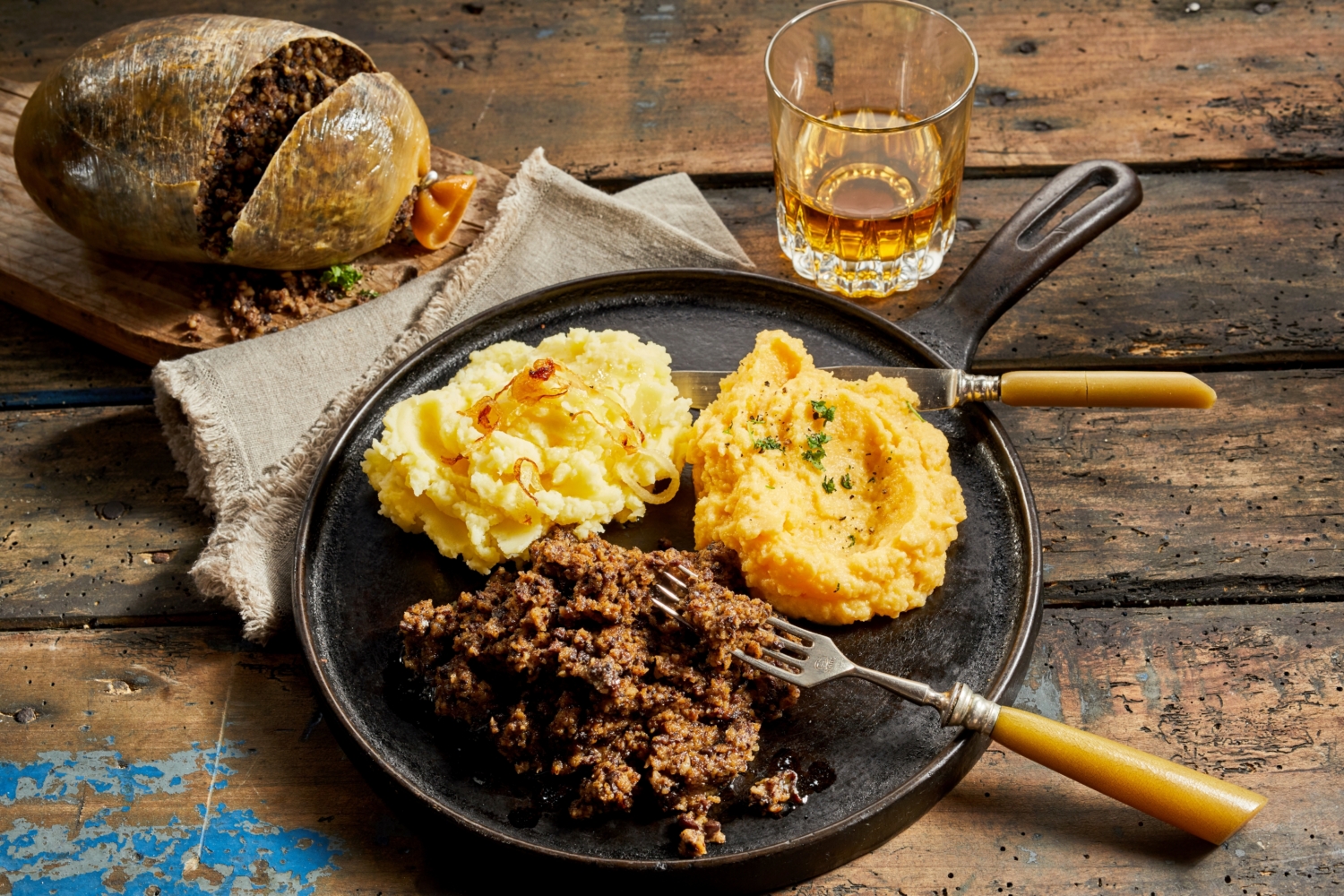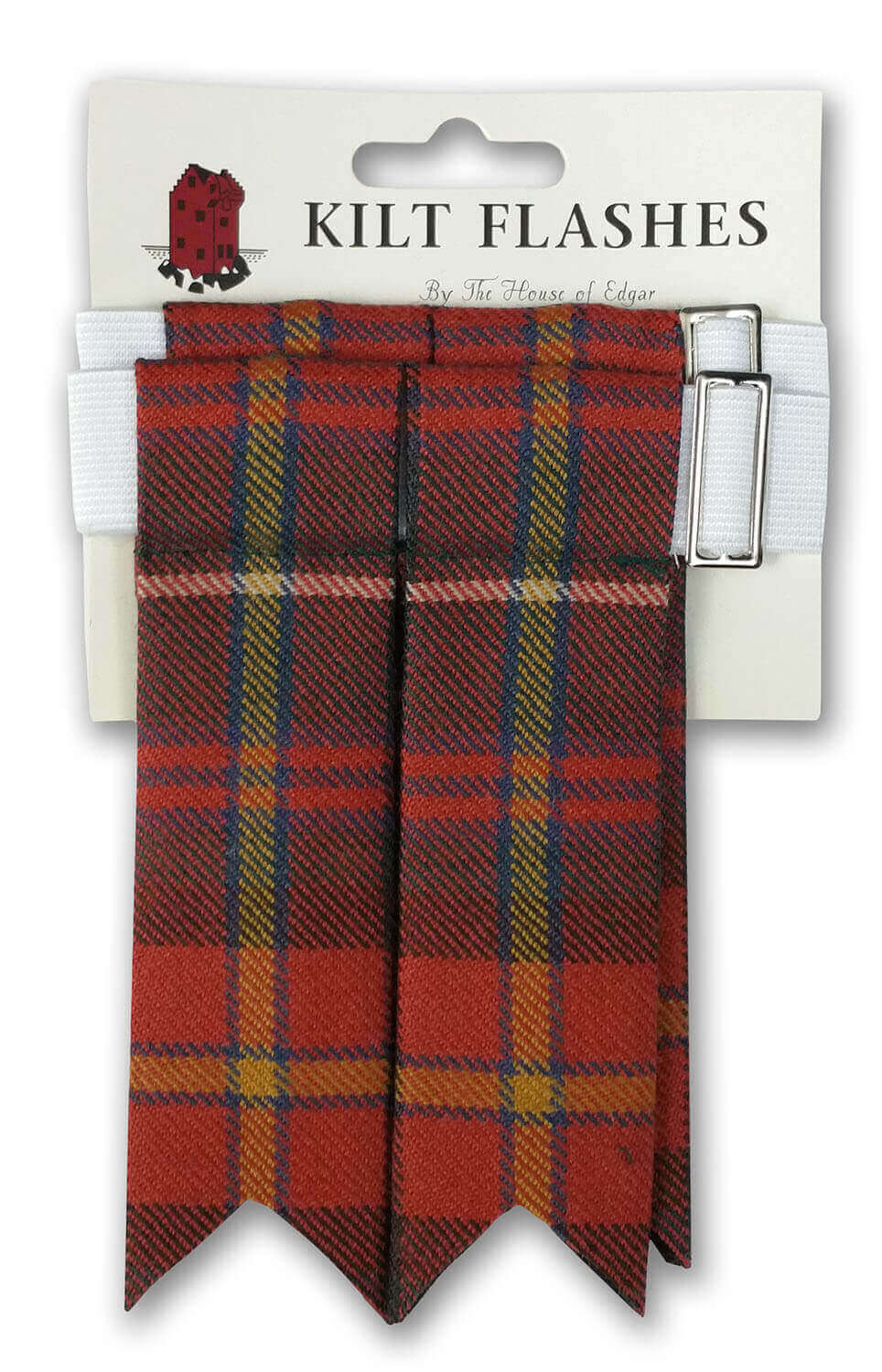Burns’ Night is approaching on January 25th, and if you attend a supper you will encounter the national dish of Scotland. Is 2023 the year of haggis?
An infamous dish
If you’ve never tried Haggis before, you’ve almost certainly heard of it. Detractors and supporters alike are equally outspoken about the Scottish National dish. Despite how you may feel about this food, its presence in Europe has been recorded for more than 500 years, so there must be something special to have kept it around for so long. I wanted to write a simple blog post about this long-lasting dish and its history with the Scottish-American community. But the story of haggis in the U.S. is more complex- and recent- than I’d thought.
Haggis is traditionally a mixture of minced sheep’s pluck (organs including the heart, lungs, and liver) mixed with onions, suet (animal fat), spices, oatmeal, and broth or blood; then cooked encased in a sheep’s stomach. The resulting mix is traditionally served with mashed potatoes and mashed turnips, or neeps and tatties.
Haggis never dies
In North America the dominant culture doesn’t typically consume animal organs as part of our main diet. So, the average reaction to hearing about haggis for the first time is probably a cautious grimace, at best. It makes you wonder: what is the secret to this dishes’ popularity?
Originally, many theorize, haggis was a food concocted by working folks out of necessity. Sheep are livestock commonly raised in Scotland and you can see their mark across the culture, including the wool that traditional Scottish tartan is made of. After harvesting the good cuts of meat of the sheep, workers would have access to the inexpensive & unwanted offal. They found that it could be conveniently kept in another part of the sheep (the stomach) for traveling. With the addition of spices and oats, it made quite a tasty and nourishing meal.
So, haggis’ endurance as the national dish of Scotland isn’t just because it’s appetizing. It’s also because through it, people connect with their hardworking Scottish roots.
Another theory that parallels this one is the practice of “toe to tail” butchering. In other words, using a butchered animal as thoroughly as possible so that nothing is wasted. This is a custom that might strike some as a thing of the past, but the need to efficiently use animals has had a lasting impact on signature cultural foods worldwide. Think of oxtail in Jamaican food, chitlins in the American south, or Aqutak, an ice cream made of animal fat and oil by Indigenous Alaskans. All things considered, haggis isn’t a terribly unusual dish. So why does it have such a reputation? After all, it’s outlawed in the U.S.
The 50-year haggis controversy
Maybe that’s a little hyperbolic. The dish itself isn’t illegal, but in 1971 the use of sheep’s lung in products meant for human consumption was banned. This meant that, effectively, the import and creation of authentic Scottish haggis was now also illegal.
I did some research to understand why this was the case. Lungs, known as lights in butchering, are a difficult organ to properly clean. It’s possible for fluid and matter from the stomach to make its way into lungs during the slaughtering process. Understandably, this turned some heads at the USDA. The next decades would see a UK outbreak of scrapie, a neurodegenerative disease found in sheep. This was the nail in the coffin; scrapie has not been proven before or since to be transmissible to humans through eating meat, but there was a desire to be safe rather than sorry.
This is all very fair, but the ban still stands after 50 years. Scots have been eating haggis for those 50 years without issue. Many North Americans feel that it’s high time to reevaluate. Some argue that the impurities found in the lungs are no different than what we might consume anyways eating meat and living as we normally would. There have been reported talks as recently as January 2022 regarding the U.S. government’s stance on the ban, and it would appear that progress is being made. That progress, however, is slow. If you’re a fan of haggis or want to try it for the first time and live in the U.S., what is to be done?
New Recipes
In the 500 years it’s existed, haggis has flexibly changed according to what people need. Scottish residents can obtain a vegetarian haggis, a kosher haggis, and a halal haggis. The variety is endless as butchers strive towards a national dish that can be enjoyed by all. Naturally, not all these variants contain sheep’s lung. The Caledonian Kitchen both create haggis within the U.S. that follows the USDA regulations. Modern haggis worldwide now incorporates a variety of meat and meat substitutes rather than just lamb. Obtaining a haggis inside North America is now easier than it’s ever been. Purists, however, insist that sheep’s lung is essential in order to give the mixture a lighter texture. To them, U.S. haggis is an affront to the real thing. There is one more option, if you’re hardcore: a black market has sprung up around those who need their haggis made by the original recipe. For the rest of us, though, the substitutes will have to do.
“Is it good?”
When you get down to it, haggis isn’t so distinct from sausage in ingredients, just in scale. Yet even celebrity chef Alton Brown balks at eating haggis after demonstrating how to make it. Others on vacation in Scotland try haggis for the first time and wonder what all the negative press is about. Like any other dish, the final product varies in taste and texture depending on who’s making it, so perhaps that accounts for the polarization.
Here at Celtic Croft, we are haggis appreciators! We carry a US-produced sheep’s haggis that comes well reviewed: “like corned beef hash, but with 1,000 times more flavor!” Positive reviews of haggis compare it to some recognizable foods: soft, crumbled sausage, or somewhere between a pate and a meatloaf. If you’re curious, though, the best thing you can do is try it yourself.
And if you already know how good haggis is, why not show it off and bring it to an upcoming Burn’s Night gathering? After all, the more enthusiasts there are, the more likely we will get an even greater variety of haggis available here in the states! If you already have haggis and aren’t sure what to do with it, we have a free pdf with a couple recipes that incorporate it.
Ith gu leòir! (“Eat plenty!”)








1 Comment. Leave new
I tried the Haggis I ordered from you.It was delicious and you are right about it being tastier than corned beef hash.I’m so glad I got it.I found a recipe for it that I’m going to try.Thank you for encouraging people to try different things by stocking unique items in your inventory.